5 Essential Home Gym Equipment For A Small Space
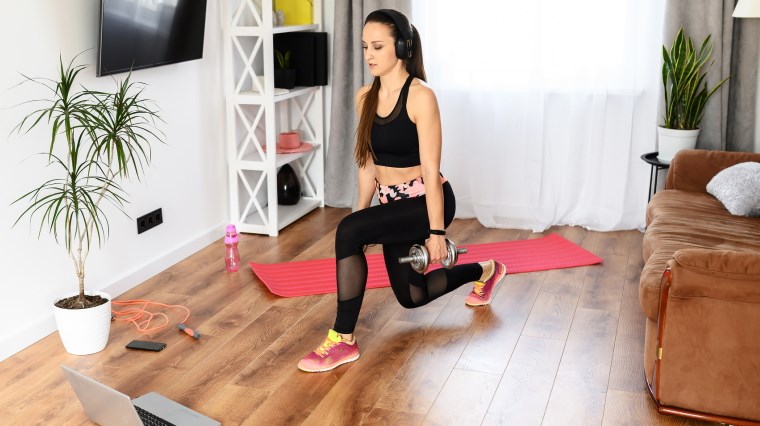
Whether you’re cooped up in lockdown or want to build your fitness from home while juggling family life, there are multiple benefits to having a home gym.
Kick-starting your home gym is easy with a little know-how and affordable in comparison to monthly gym membership fees. If you’re working from home with a desk job, it makes keeping on track of your fitness more accessible – with your home gym just a room away to bust a move during your lunch break.
If you’re worried about a shortage of space, most of the following beginner gym equipment can be rolled away with ease without taking up floor space or is compact enough to create an exercise nook in your home office or even bedroom. The portability of this equipment also means you can take your home gym to the outdoors to double up on the feel-good vibes.
With your home gym, you can kick-start your fitness with as little as 5 minutes of your time a day to train for strength, flexibility and cardiovascular health.
Jump Rope
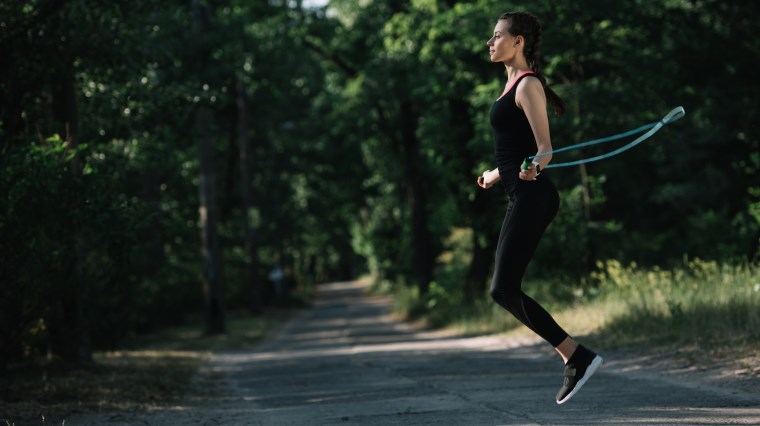
Jump ropes offer an on-the-spot, calorie-burning exercise. This fast, full-body workout strengthens your lower body (glutes, hamstrings, quads, calf muscles) to decrease injury risk during sport, engages your core (abs, oblique muscles) and activates your upper body as you stabilise the movement (chest and back muscles, shoulders, triceps, biceps and forearms).
10 minutes of jump rope is commonly compared to running an 8-minute mile (5-minute kilometre) in terms of its calorie-burning benefits. It improves your cardiovascular health and as a weight-bearing exercise, helps your bones adapt to increased pressure by building bone density to keep them stronger as you age.
It even gives your brain a workout as you find your rhythm and must coordinate multiple actions simultaneously to jump quickly, effectively and maintain balance. When you find the right rhythm, it’s like finding your runner’s high with its mood-boosting benefits.
It’s an ultra-versatile exercise – whether you’re a beginner using a jump rope traditionally or including jump rope tricks like double unders, high knee jumps, criss cross, or single foot jumps in your routine. A speed jump rope is ideal for trick-based jump rope workouts and as your skill level progresses, you may consider a weighted jump rope to increase the intensity further.
Yoga Mat or Exercise Mat

Roll a training and gym mat on the floor, and instantly transform any room or outdoor space to your own workout sanctuary.
Yoga mats are perfect for just that – yoga (not to mention Pilates, foam rolling and stretching) – but what sets them apart from regular exercise mats is their stability. As always safety first – that stability is essential when performing challenging poses. The just-right cushioning and firmness of yoga mats takes the pressure off your joints and bones without making the mat feel wobbly or making you feel disconnected from the floor. Yoga mats are usually used barefoot and have a grippy, non-slip design.
Exercise mats are fantastic for floorwork – any time you’re on your hands or knees or performing workouts low to the ground like push ups and abdominal exercises. Whereas yoga mats are designed for low-impact activity, on an exercise mat you can perform high-intensity workouts. The durability of exercise mats allows them to tackle jumps and falls, strength training, HIIT workouts or impacts from runaway dumbbells, giving some protection to your floor.
Being thicker than a yoga mat, exercise mats offer greater shock absorption to reduce your injury risk as the intensity and stress on your joints escalates. Firmer exercise mats are ideal for weight training with gym equipment (e.g. dumbbells and kettlebells) whereas softer mats are perfect for workouts that use your own body weight as resistance (e.g. push ups, planks, crunches, Russian twists).
Resistance Band
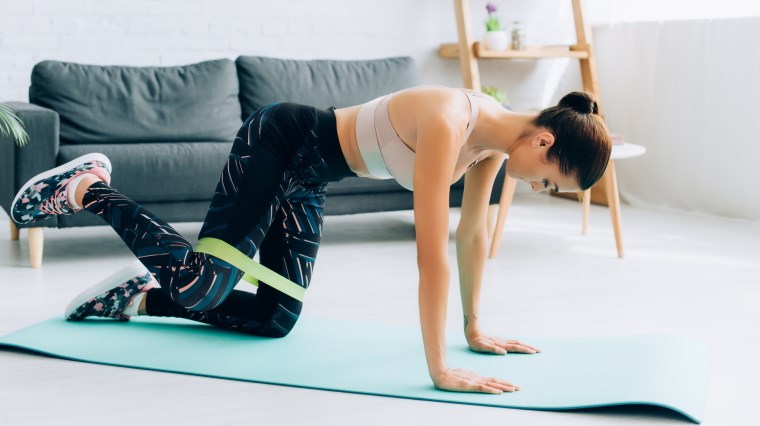
Once you include resistance bands into your workout routine, you’ll wonder why you ever just stuck to free weights (e.g. dumbbells, barbells, kettlebells). Being so lightweight and portable, you can use resistance bands anywhere and anytime.
Resistance bands deliver similar benefits as weight training but at a lower impact and are a safer alternative for beginners - reducing the stress on your joints and your injury risk from potentially dropping a heavy weight on your toes. Resistance bands are less about physical weight and more about applying tension to the muscle groups you wish to activate. They provide multiple exercises in one and are incredibly versatile – allowing you to achieve a full-body workout.
Resistance bands are available in flat loop bands which are ideal for warm-ups, adding stabilisation to yoga poses and stretches, rehabilitation to improve flexibility and balance and to gradually strengthen and tone muscles. Resistance tubes may come with a handle that acts as an anchor to provide extra control - loop the handle through your hands or feet to work out your upper body or lower body as needed. Resistance tubes with handles generally rely on a pressing/pulling action and can replicate the effects of a traditional dumbbell workout.
The secret to resistance bands is progression – with a variety of resistance levels available you can increase the intensity as your fitness evolves. Resistance bands allow you to personalise your workout by performing more reps with a lighter level of resistance or less reps with a heavier level of resistance. You can even double up on resistance levels by using two or more resistance bands simultaneously.
Dumbbell
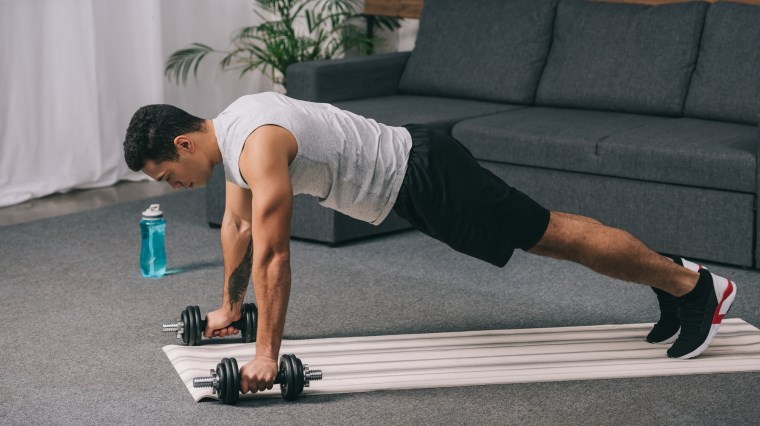
Although both have a place in your home gym, based on your fitness goals you may prefer dumbbells and weights to resistance bands as your go-to strength training equipment. Being higher impact than resistance bands, dumbbell exercises allow you to achieve muscle gains and shed body fat more quickly yet tend to be more compact, beginner-friendly and easier on your joints than barbells.
The weight of dumbbells is equally balanced on either side, improving your control compared to their cousin, the kettlebell which can be trickier to master. Dumbbells are fantastic at targeting specific muscle groups in static exercises, particularly in upper body workouts like bicep curls and tricep extentions. They’re also ideal for turning your bodyweight exercises (e.g. squat, lunges, crunches) into free weight exercises – shifting the intensity up a gear by increasing resistance on your joints.
You can graduate to a heavier dumbbell as your fitness improves. Although we’d recommend a pair of dumbbells to simultaneously workout both sides of your body, even with only a single dumbbell you can increase reps or sets to add intensity.
Foam Roller
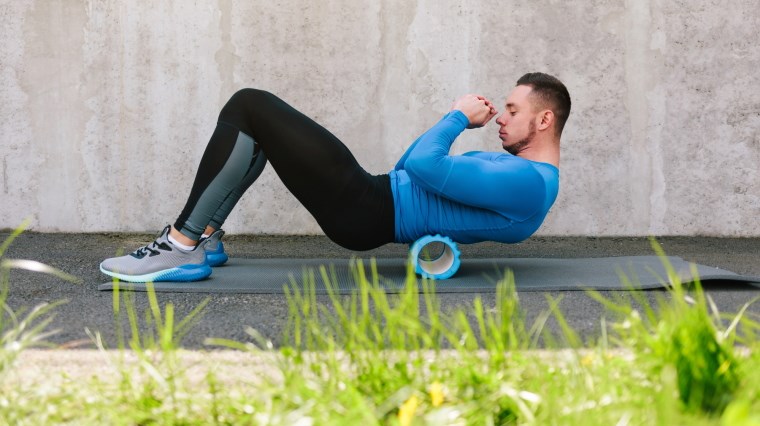
Foam rollers are a self-myofascial release (self-massage) tool that uses your own body weight to apply targeted pressure to ‘muscle knots’ (trigger points), releasing tension and allowing you to move more efficiently. Muscle knots can develop from an inactive lifestyle and poor posture, emotional stress and anxiety, injury or repetitive physical stress causing the overworked muscle to tighten and contract, resulting in soreness and sensitivity.
Foam roller exercises are ideal to prime your muscles for activity as part of your warm-up routine - increasing circulation to improve the transport of oxygen-rich blood to your hard-working muscles and elongating muscle fibres to increase flexibility and in turn, decrease risk of injury. Post-workout foam rolling exercises speed up recovery by minimising the effects of delayed-onset muscle soreness (DOMS), reducing inflammation and helping your body ease into a pre-workout state.
When choosing your foam roller, consider the density or firmness. Soft foam rollers are gentle, offering a good starting point for beginners or everyday athletes that have particularly sensitive muscles. Alternatively, hard foam rollers have virtually no cushioning, providing a deeper tissue massage to release very tight muscle knots, but can cause trauma if not used properly. Foam rollers with medium firmness provide a happy medium with moderate cushioning and are adaptable to be used as props to help stabilise your body during yoga and Pilates exercises.
Happy training!
